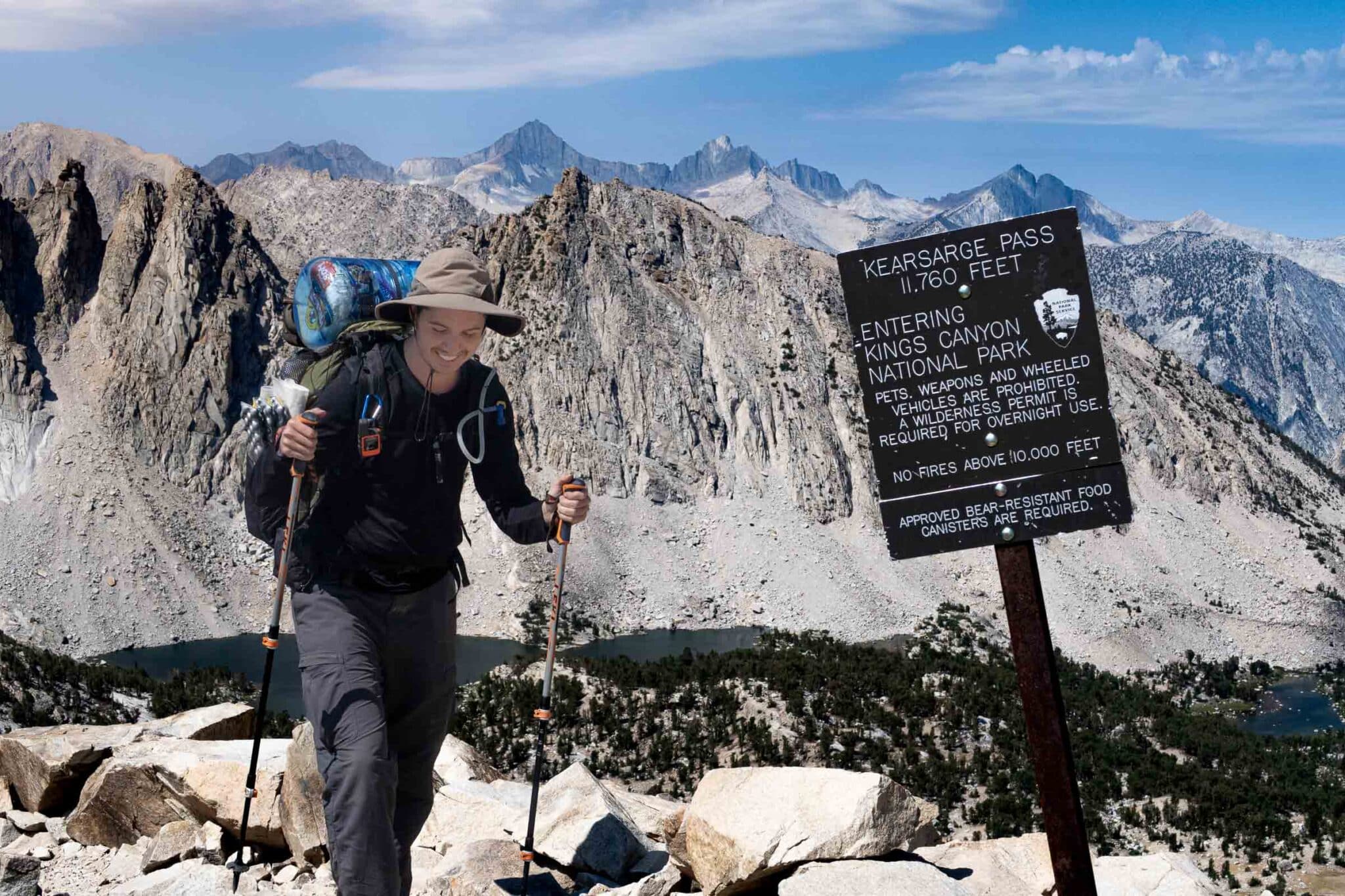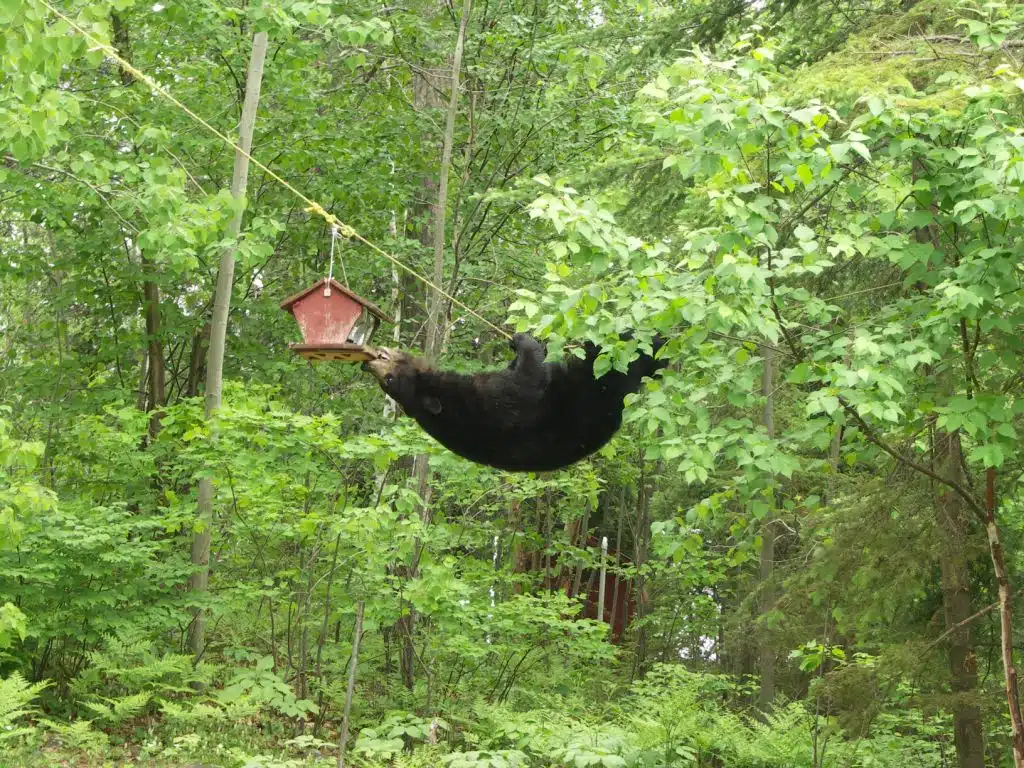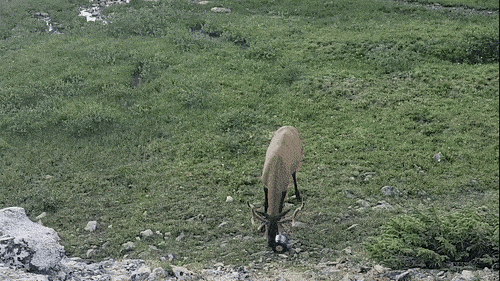Requirements for bear-resistant containers continue to increase alongside conservation efforts. Wading through multiple websites to determine whether or not you have to use one can be daunting, so we’ve compiled information from all around the country into three helpful features.
#1. Interactive Map – Zoom, scroll, and explore this map that provides a visual of where bears are known to live, overlaid with trail requirements.
#2. Park Requirements List – Find your park on the drop-down menu to see its specific regulations.
#3. Trail Requirements List – Find the trail you intend to hike to see if you’re required to carry a canister.
There are hundreds of opportunities to explore in bear country that fall outside the bounds of this page. Go directly to your park or land manager’s website for updates, especially if you don’t see it on this list.

Using bear canisters ensures local bears don’t start associating people with an easy meal. When you visit a location known to be bear territory, it’s a good idea to keep your food in a bear-resistant container, regardless of requirements. Doing so protects not only your food but bears and future adventurers, too.
Bear canister requirements are often implemented when human bear conflict reaches a crisis level. This often means hung food pulled down nightly, aggressive bears, and occasionally people getting hurt by bears. You might be thinking, “I haven’t heard of a bear crisis where I am headed backpacking” However, human bear conflict is on the rise in nearly all backcountry locations that do not have strict rules around food storage. When bears continue to access human food it is guaranteed that the human bear conflict becomes a crisis.
When bears access human food it creates a disastrous feedback loop. Over a few years, as bears seek human food more intensely, land mangers will try a few strategies to recondition bears to no longer seek human food. This can include closing certain areas, implementing food storage orders, lethally removing certain bears, bear hazing, and other tools. Usually, bears will continue to access human food until strict rules around bear canister requirements are put into place. You can do your part to keep bears healthy and wild by preventing them from accessing human food in the first place by using a bear resistant food container. Proper food storage can prevent human bear conflict crises in the first place which keeps both you and the bears safe.
Specific locations vary, but you can expect consequences if you break park regulations around bear canisters. Fines, park expulsion, and even jail time are all on the table. For instance, in the Boundary Waters Canoe area, violating the food storage order is a Class B misdemeanor which means up to a $5,000 fine or six months jail time.
Whether you are caught or not, you’re risking a dangerous bear encounter, losing your hard earned provisions, and upending the equilibrium of a local ecosystem by teaching bears that people bring treats. The saying that a fed bear is a dead bear is true.
In some locations, using the hang method of food storage is still technically allowed. However, more and more land managers are moving away from it because hangs simply aren’t as effective as bear-resistant containers. Hanging food is generally seen as a delaying tactic. You may encounter a dangerous situation where you need to defend your food from a bear in the middle of the night. Bears are figuring out how to access even properly hung food. Encouraging people to instead use BearVaults frees people of the need to find a good tree at the end of their day. You can check to see if hanging food is permissible by reading the food storage order for the place you plan to backpack.
Not always. Some places simply specify that “hard-sided bear-proof containers” are necessary. Others say containers must be approved by the International Grizzly Bear Committee. Other locations will specify exact models of canisters that are allowed for use. The BV425, BV450, BV475, and BV4500 are IGBC-approved and accepted across the United States and Canada.

Grab and scroll to move around the map. Zoom in/out for a closer look at bear range, required areas, and trails. This map is a comprehensive overview of bear country and displays the most up to date extent of bear range in North America.
BearVault strongly recommends carrying a bear canister anytime you are in known bear habitat or crossing into the possible bear range.

This list is extensive but not exhaustive. If you don’t see your destination included, go directly to its website rather than assume there are no requirements.
Canyonlands National Park has mandated that campers at Salt Creek designated campsites and the Salt/Horse Zone in The Needles must store all food, beverages, and associated containers, garbage, and all scented items in a hard-sided, park-approved animal-resistant food container from March 15th through November 30th.
Bear resistant containers are required in Nyack / Coal Creek Camping Zone for at large camping and highly recommended in all other areas of Glacier National Park.
In the offseason and shoulder-season, Mt. Rainier National Park takes down the food hanging poles and expects backcountry travelers to carry bear canisters.
Bear resistant canisters are required in certain wilderness areas and cross-country zones within North Cascades National Park.
Olympic National Park mandates that bear resistant canisters are required on the coast, in the Royal Basin area, Sol Duc/7 Lakes Basin area, 5 Mile Island, Enchanted Valley, the entire Wilderness Coast, and any other location where food cannot be hung 12 feet high and 10 feet out from the nearest tree trunk.
Overnight wilderness backpackers in Rocky Mountain National Park are required to secure all food items, scented items, and garbage inside a hard sided commercially made carry in/carry out bear-resistant food storage canister. This is required for RMNP wilderness areas due to recurring wildlife incidents.
Other methods of food storage are not permitted in the park’s wilderness at this time.
Previously, RMNP’s food storage rules were limited to the summer season and below treeline. However, after repeated incidents the food storage order has been expanded.
This list is extensive but not exhaustive. Trail requirements must be researched thoroughly as they can pass through multiple parks with varying rules. If you don’t see your trail represented here, either continue your research or simply carry a bear-resistant container to be safe. There are far more long distance hiking trails than the big three (PCT, CDT, AT).
Every trail passes through different bear habitat and land management. Carry a bear canister when in doubt and check with the parks and forests that you are passing through to determine specific regulations.
Bear canisters are required in the following areas along the PCT:
From the PCTA: “The trees up on the crest almost never have a branch structure that makes this [Hanging Food] realistic. This means that people on the PCT will need to carry a canister to comply with the new food storage order – it’s just the right thing to do, and it’s usually easier than trying to set up a good food hang.”
Bear canisters are strongly recommended by the Appalachian Trail Conservancy for all overnight visitors along the entire trail.
Additionally, the USFS has the following requirements:
Bear canisters are required in the following areas along the CDT:
Bear canisters are required in the following areas along the PCT:
From the PCTA: “The trees up on the crest almost never have a branch structure that makes this [Hanging Food] realistic. This means that people on the PCT will need to carry a canister to comply with the new food storage order – it’s just the right thing to do, and it’s usually easier than trying to set up a good food hang.”
Bear canisters are required in the following areas along the AT:
Bear canisters are required in the following areas along the CDT:
You may be planning a trip within the United States’ 154 National Forests, 803 federally managed wilderness areas, 74 state wilderness areas, or one of many other wild places to recreate. Locations like Havasu Falls, Colorado’s Maroon Bells, Desolation Wilderness, parts of Pisgah National Forest, and New York’s Adirondacks require the use of bear resistant containers. It is important to carefully research the local regulations for proper food storage in each place you plan to visit.
In Canada, bear canisters are becoming recognized as the preferred tool for storing food by Parks Canada and provincial park agencies. For instance, Jasper National Park requires the use of bear resistant containers in backcountry spots that do not have food storage infrastructure installed by the park.
Still unsure? Just do the right thing and carry your BearVault!
There may still be plenty of areas where you can go without your BearVault. But being legally required to carry one is only one motivating factor, and it shouldn’t be the biggest one.
You won’t be the one teaching bears to crash campsites or follow hikers. You won’t have to worry about finding the right tree or sleep light, subconsciously listening for furry intruders. You won’t wake up to find your food destroyed.
You will be part of a huge community of savvy outdoorists who take their recreation responsibilities seriously. You will sleep soundly, knowing you’ll wake to all your breakfast items safe and secure.
When you use a bear-resistant container, like BearVault, you can rest easy knowing your responsibility is helping prevent major bear issues in that area.

The areas that legally require carrying a bear canister only scratch the surface of many more places that strongly recommend bear canisters or simply are home to bears. Truly respecting wildlife means always integrating proper food storage into your packing plan.
Take a look at the map of bear habitat in North America. Does your hike enter bear country? If so, you can do the right thing and carry a BearVault. Even beyond bear habitat, other areas are home to critters and creatures who may take an interest in your food and scented items.
As a wilderness user, you have a responsibility to all these creatures. Carrying a bear canister is a great way to protect the places we all love.
